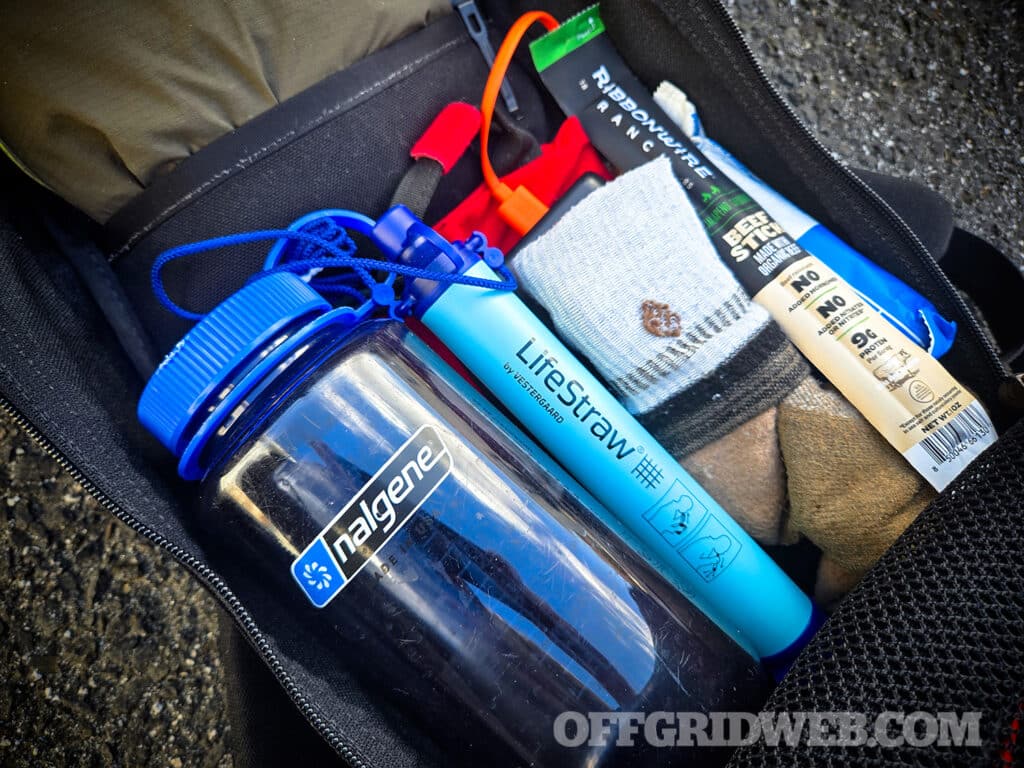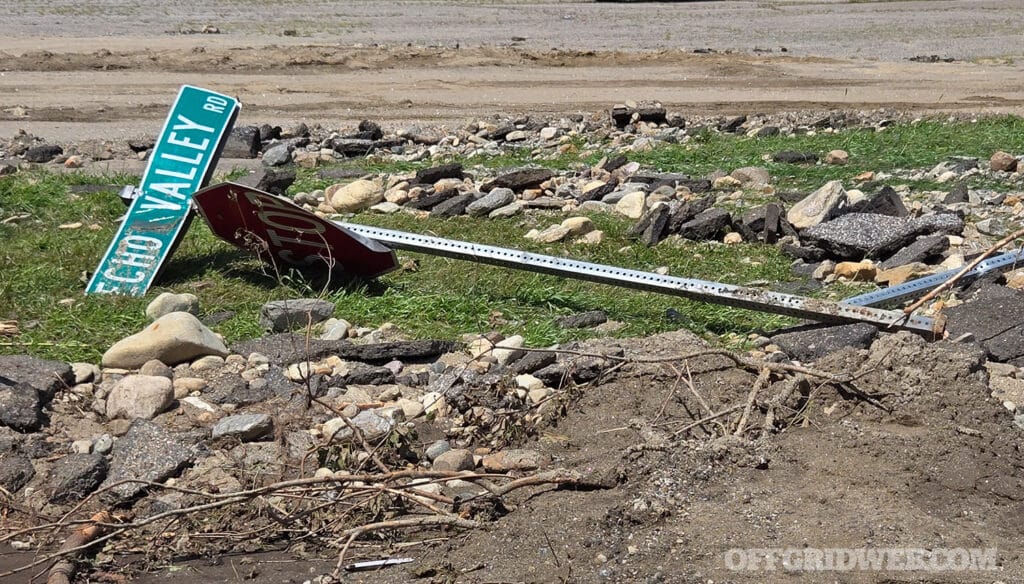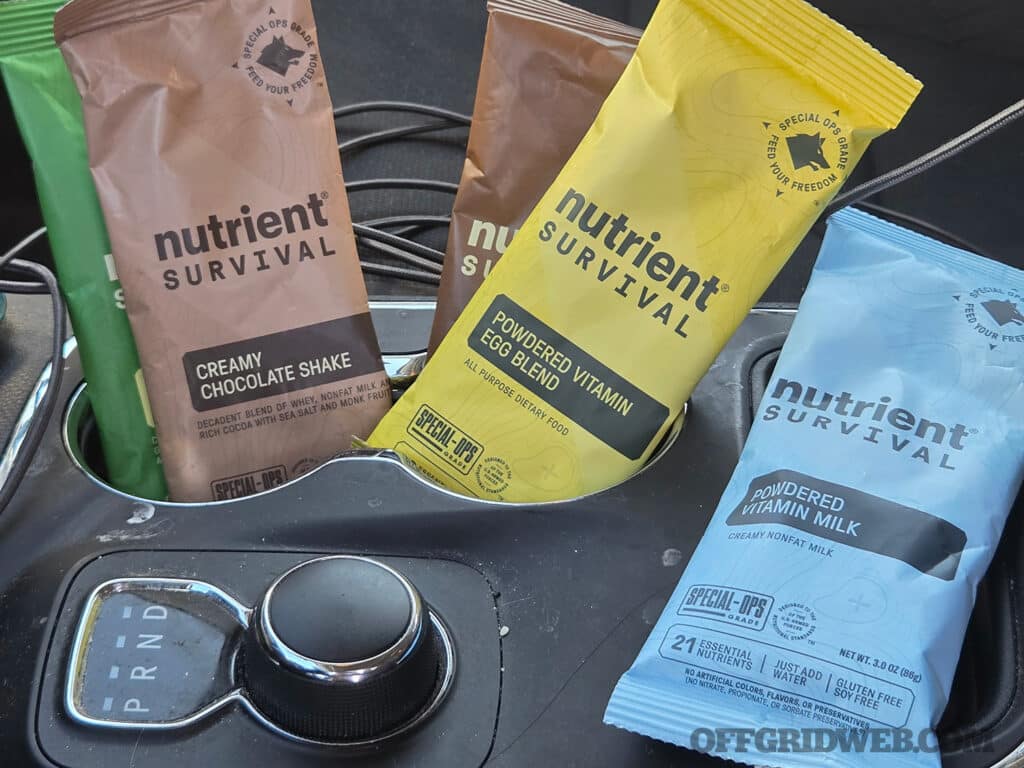RECOIL OFFGRID Transportation Grid Down, On the Go
In This Article
Not all grid down scenarios are created equal, and in most cases, we see localized and sometimes regional grid down scenarios. There is a good chance that most of us have experienced some sort of grid down situation in our lifetimes, and they are occurring with increasing frequency due to major storms, cyber-attacks, and strain on antiquated utility systems.
When we look at grid down scenarios we often plan for the supplies, gear, and equipment we need to sustain our homes for both short term and long-term situations. This planning is essential to maintain a healthy and functional home system for us and our loved ones, but what if we are presented with a situation where we need to move from the relative safety of our homes?
The reality is we will be faced with a variety of reasons that we will have to travel, especially in a long-term grid down scenario. The need to bug out is often top of mind, but not all movement during a grid down situation is as dramatic, and while we may face challenges from power outages, loss of cell phone service, or contaminated water supplies some semblance of normal life will generally need to continue.

Even with careful planning, there may come a time when we have to travel for supplies, seek medical care, or even commute to work if our job is outside the affected area. In a grid-down situation, being ready to move is crucial. However, the lack of essential utilities, damaged infrastructure, and limited access to food, water, and fuel can make travel not only difficult but also potentially dangerous.
Armed with a few essential survival skills and the right gear we can decrease the likelihood of being stuck in a bad situation while on the move, and increase our ability to thrive during adverse situations!
Let’s take a look at two real life grid down scenarios I faced over the last few years and discuss some of the skills and gear I relied on to keep me safe while on the move during these events.

Back in 2012 I was living in New York on the western end of Long Island. I lived a very different lifestyle back then. I was working in the financial industry, wore suits to work and thought more about impressing my clients than I did survival. Despite that I still spent much of my free time getting out into the woods to learn skills, participating in GORUCK events, and taking urban survival and SERE courses.
All that training got its first real world test when we got hit with “Superstorm Sandy.” While it was not a hurricane when it hit Long Island, it still brought record rainfall and high winds to the area.
It had already been a particularly wet season, so the ground was saturated before the storm hit. Additional water and high winds quickly started taking down trees, many of which destroyed power lines and crashed through people’s homes. Areas near the coast saw massive storm surges that destroyed people’s homes and flooded the entire first floor of many apartment buildings. Coastal facilities that the Island relied upon to bring fuel and other resources in were badly damaged. The antiquated infrastructure could not handle the flood waters and roads, subway stations, and basements quickly filled up with water.
The aftermath of the storm was like nothing I had ever seen before in person, downed trees blocked roadways and left power lines in shambles. Some of my neighbor’s homes were badly damaged or destroyed. Roads that were passable were clogged up due to abandoned cars and none of the traffic signals were working.
Having no power and no means of driving anywhere we spent the first few days hunkered down. We had a gas-powered generator hooked up to the house and ran it for a few hours each day to take care of cooking, cleaning, and allowing my young daughter to have a little entertainment.
As the days passed and crews worked diligently to clear the roads, we quickly realized we were facing a new problem. None of the gas stations could pump gas because the electronic pumps had no power. With a limited supply of gas, and no means of getting more, we decided that we should stay home as much as possible as we had adequate supplies to last some time.
About five days in, we learned that power wouldn’t be restored in my area for at least two weeks. Nearby towns, with less damage, were expected to have theirs back a bit sooner. Feeling a bit stir-crazy and craving some comfort food, I decided to head out on foot to find any stores with power or running backup generators. The distance wasn’t an issue for me, as I regularly rucked with 50 pounds over 5 to 7 miles a few times a week. Not knowing what to expect on my first trip, I geared up with a solid kit to stay safe and healthy. That setup worked well for a few weeks, until power began to return and vehicle travel became more feasible.

Above: I did my best to faithfully recreate this kit from 2012, the bag is a substitution for the Original GORUCK pack I had back then.

Above: The minimal kit I carried was both lightweight and functional.
Vehicle Travel became possible after a couple of weeks as power was being restored in surrounding towns. Gas was accessible but in high demand and short supply. Gas rationing reminiscent of the 1970’s was put in place leading to long waits and high frustration among people. Fights were becoming a common occurrence at gas stations, and I saw multiple reports of increasing aggression including stabbings, people brandishing firearms, and at least one shooting. Outside of self-defense equipment there wasn’t really any gear to help here, but there is a very valuable skill that helped keep me safe.
The best way to come out on top during a violent situation is to not get yourself in that situation in the first place. Having a keen understanding of body language, vocal tone, and behavior—and the ability to quickly assess when these things are off in a person or group—is the key to avoiding a dire situation. There were quite a few instances where I made the decision to leave a gas line and go somewhere else because it was clear to me that the tension was building at that location. In those cases, it was better to get out of there instead of being placed in a self-defense situation.

Above: Even a basic first aid kit can help out in bad situation.
After a few weeks, things slowly started to return to normal and a month or so later it was pretty much life as usual outside of a few lingering inconveniences. I can honestly say it was an eye-opening experience for me of just how unstable an urban environment can be when the modern amenities that people have become so accustomed to were stripped away. There was little concept of community and much more of a “every man for themselves” mentality.
Most importantly I learned a valuable lesson of how difficult vehicle travel can be in an urban environment during a grid down scenario. Even after the road were cleared the lack of gas, non-functioning traffic signals, and a large population led to roadways being largely impassible for extended periods of time. Travel on foot, was the best option in this scenario and having the right equipment made that process safer and generally more pleasant.

Above: A ruined intersection after catastrophic flooding in western Connecticut.
After my experience with Hurricane Sandy, I became increasingly uneasy living in densely populated areas. When the pandemic hit in 2020, and I saw the same unrest as before, I knew it was time for a change. I moved my family to a rural town in Connecticut, a charming place filled with woodlands, hiking trails, rivers, farms, and many original buildings from the 1700s. The population is much smaller—spread over 33 square miles compared to the dense two square miles of my previous town. The people are friendly, with a strong sense of community. But even in a place like this, a grid-down scenario still presents significant challenges.
In August 2024, we were hit by an unexpected storm that dumped over 13 inches of rain in just a few hours, leading to catastrophic flooding. Rivers and streams quickly overflowed, and the intense rain caused widespread damage. Roads, bridges, homes, and businesses were severely affected, with many destroyed. Power outages were widespread, vehicles were swept away, and tragically, a few lives were lost to the floodwaters.

Above: A bridge that partially collapsed with a car on it.
The aftermath of this storm left much of our critical infrastructure in bad shape. Drain systems were decimated, power lines and dams were damaged, mudslides knocked out entire sections of roads, and the rising rivers washed away many of the water crossing bridges.
Unlike my experiences with Hurricane Sandy, power was restored in just a few days, but the roads were another story. I was fortunate to not have any damage to my home, but because of our location and the damage to the surrounding roads we were essentially trapped for a few days until road crews could clear downed trees and fill large holes with gravel.
When we were finally able to leave the immediate area, I quickly realized how difficult it was to reach basic places like the grocery store, my doctor’s office, or the schools. Trips that usually took just a few minutes were now taking over an hour, thanks to having to navigate winding back roads, and what seemed like an endless number of detours.
After that first trip out, it became clear that I needed a plan. Walking wasn’t an option in most parts of town—there are no sidewalks, and the trails I’d normally use to reach the nearest stores were washed out and blocked by fallen trees. Driving was my only choice, but that wasn’t entirely safe either. There were massive potholes, unfamiliar detours, and I had to cut through a local state forest to reach some of the places I needed. If my vehicle broke down, I’d likely be stuck in an area without cell service, making it impossible to call for help.
The gear needed to travel in this area had to be much more rugged than what you'd typically need in a more populated setting. I had to be ready for extended travel through wooded areas, as even a simple trip to the store could leave me over 10 miles from home, with several miles of hiking required just to get a cell phone signal.
Fortunately, I’ve learned a lot in the 12 years that have passed since Hurricane Sandy, and I keep most everything I needed for this situation in my vehicle already.

Above: A Pod-X Jump Starter from Battlbox can jump start your vehicle and charge small electronics.

Above: My trunk bag, The Hidden Woodsmen Day Ruck with an attached Tuff Possum Gear Med Pouch.

Above Wilderness Tools of the Trade: TOPS Knives Hammer Hawk Hatchet, Knives By Nuge Big Boi, Silky Pocket Boy Saw, and Badger Claw Outfitters Gloves all laid out on a PNWBUSHCRAFT Jr. Ground Cloth.

Above: a Grayl UltraPress, Solo Stove and Uberleben cook pot.
It's been 2 months since the storm, and while much headway has been made on road and infrastructure repairs, it is expected to take upwards of a year to completely rebuild. Ultimately, I have become less inclined to travel if not needed and look to consolidate trips through damaged areas as much as possible.
Just as we discussed in the first scenario, the best way to come out on top of a bad situation is to avoid putting yourself in one altogether. When travel is necessary, having the right equipment and the skills to use it provides the confidence to know I am prepared to handle an emergency should it occur.
While tensions are high in the area, living in a small town provides a much tighter knit community, where people are more focused on supporting each other rather than just looking out for themselves. While living in a wooded area presents more geographical challenges and has more animal threats—such as bears—I generally feel that people are not a significant threat, especially since I can identify most of the adults in the town. Those who don’t live here would stand out.

Above: As my skillset grew so did my First Aid and Trauma Kit.
My experiences through two grid down scenarios offered valuable lessons. Environment plays a big part in both your access to resources, and the challenges that are faced when on the move. An urban grid down scenario may require less equipment, but vehicle travel is still difficult due to heavy reliance on traffic signals and a higher population density. The higher demand for resources puts a strain on the population that already does not have much of a connection with much of the rest of their community, which can quickly lead to aggression and violence.
In a rural or heavily wooded area, the terrain adds extra challenges, making travel on foot more difficult. The infrastructure, especially roads and bridges, isn’t as sturdy as what you'd find in a larger city, which means more damage and potentially impassable routes for vehicles. While people may be more community-focused, lowering the risk of violence, the threats from wildlife and difficult terrain are higher.
In either case having the right equipment and skillset to use the gear can go a long way to increasing your safety while moving in a grid down scenario. Like dealing with any other emergency, being on the move requires preparation and while we can’t account for every possibility by having a plan in place will greatly reduce possible gaps.
Finally, the ability to remain calm and objective during a grid down scenario is key to making it through the initial trigger event, and the inevitable aftermath. In both cases, panic and fear lead to tragedy. During Hurricane Sandy people lost their lives because tension brought violence, and during the 1000-year flood lives were lost because panicked people were attempting to navigate through fast moving flood waters instead of staying put.
Staying calm, being well-prepared, and knowing your own skills and limits are key to making smart decisions when traveling during a grid-down event. Understanding where it’s safe to go and where it’s not is crucial, and the best way to stay safe is by avoiding unnecessary risks and dangerous situations altogether.

Above: Give your body the fuel it needs! Nutrient Survival offers both preserved foods and shakes to ensure you get all the resources you need to keep moving.
Below you will find links for much of the gear I mentioned in this article and the places I got the gear from. All the equipment I mentioned in the article is gear that I have used and rely upon to get me through emergency situations and during my regular activities both in day-to-day life and when training my skills in the woods.
Don’t miss essential survival insights—sign up for Recoil Offgrid's free newsletter today!
Check out our other publications on the web: Recoil | Gun Digest | Blade | RecoilTV | RECOILtv (YouTube)
 STAY SAFE: Download a Free copy of the OFFGRID Outbreak Issue
STAY SAFE: Download a Free copy of the OFFGRID Outbreak Issue
No Comments